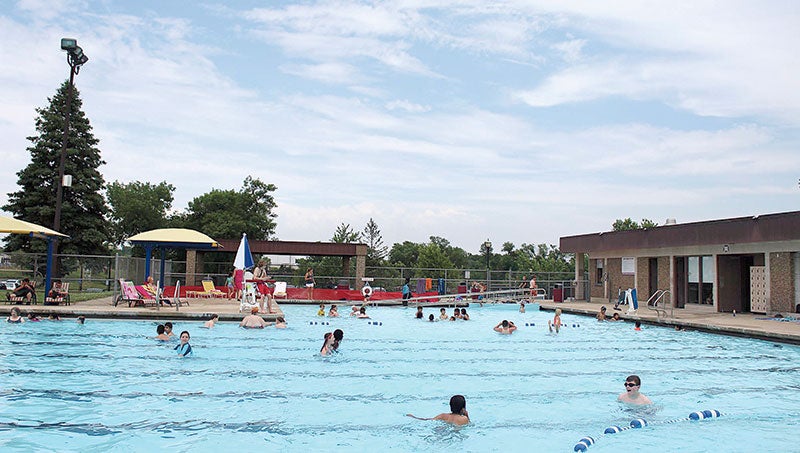Chauvin guilty on 3 counts
Published 4:11 pm Tuesday, April 20, 2021
|
Getting your Trinity Audio player ready...
|
MINNEAPOLIS — Former Minneapolis Officer Derek Chauvin was convicted Tuesday of murder and manslaughter for pinning George Floyd to the pavement with his knee on the Black man’s neck in a case that touched off worldwide protests, violence and a furious reexamination of racism and policing in the U.S.
Chauvin, 45, could be sent to prison for decades.
The verdict set off jubilation around the city. People instantly flooded the surrounding streets downtown, running through traffic with banners. Cars blared their horns. Floyd family members who had gathered at a Minneapolis conference room could be heard cheering and even laughing.
“America, let’s pause for a moment to proclaim this historical moment, not just for the legacy of George Floyd but for the legacy of America,” Floyd family attorney Ben Crump said at a joyous news conference that included Floyd’s young daughter. “This is a victory for those who champion humanity over inhumanity. Those who champion justice over injustice.”
The jury of six white people and six Black or multiracial people came back with its verdict after about 10 hours of deliberations over two days. The now-fired white officer was found guilty on all charges: second-degree unintentional murder, third-degree murder and second-degree manslaughter.
His face was obscured by a COVID-19 mask, and little reaction could be seen beyond his eyes darting around the courtroom. His bail was immediately revoked and he was led away with his hands cuffed behind his back. Sentencing will be in two months; the most serious charge carries up to 40 years in prison.
Defense attorney Eric Nelson followed Chauvin out of the courtroom without comment.
As the judge asked jurors if they reached a verdict, a hush fell on the crowd 300 strong in a park adjacent to the courthouse, with people listening to the proceedings on their cellphones. When the final guilty verdict was announced, the crowd roared, many people hugging, some shedding tears.
At the intersection where Floyd was pinned down, a crowd chanted, “One down, three to go!” — a reference to the three other fired Minneapolis police officers facing trial in August on charges of aiding and abetting murder in Floyd’s death.
Janay Henry, who lives nearby, said she felt grateful and relieved.
“I feel grounded. I can feel my feet on the concrete,” she said, adding that she was looking forward to the “next case with joy and optimism and strength.”
An ecstatic Whitney Lewis leaned halfway out a car window in a growing traffic jam of revelers waving a Black Lives Matter flag. “Justice was served,” the 32-year-old from Minneapolis said. “It means George Floyd can now rest.”
Prosecutor Jerry Blackwell, who pounded away at Chauvin’s witnesses during the trial, said the verdict sends a message to Floyd’s family “that he was somebody, that his life matters.”
Minnesota Attorney General Keith Ellison commended the bystanders at Floyd’s slow-motion death who “raised their voices because they knew that what they were seeing was wrong,” and then “told the whole world” what they saw.
Ellison read off the names of others killed in encounters with police and said: “This has to end. We need true justice. That’s not one case. That’s social transformation that says no one is beneath the law and no one is above it.”
The verdict was read in a courthouse ringed with concrete barriers and razor wire and patrolled by National Guard troops, in a city on edge against another round of unrest — not just because of the Chauvin case but because of the deadly police shooting of a young Black man, Daunte Wright, in a Minneapolis suburb April 11.
The jurors’ identities were kept secret and will not be released until the judge decides it is safe to do so.
It is unusual for police officers to be prosecuted for killing someone on the job. Convictions are extraordinarily rare. Out of the thousands of deadly police shootings in the U.S. since 2005, fewer than 140 officers have been charged with murder or manslaughter, according to data maintained by Phil Stinson, a criminologist at Bowling Green State University. Before Tuesday, only seven were convicted of murder.
Floyd, 46, died May 25 after being arrested on suspicion of passing a counterfeit $20 bill for a pack of cigarettes at a corner market. He panicked, pleaded that he was claustrophobic and struggled with police when they tried to put him in a squad car. They put him on the ground instead.
The centerpiece of the case was the excruciating bystander video of Floyd gasping repeatedly, “I can’t breathe” and onlookers yelling at Chauvin to stop as the officer pressed his knee on or close to Floyd’s neck for what authorities say was 9 1/2 minutes. Floyd slowly went silent and limp.
Prosecutors played the footage at the earliest opportunity, during opening statements, and told the jury: “Believe your eyes.” And it was shown over and over, analyzed one frame at a time by witnesses on both sides.
In the wake of Floyd’s death, demonstrations and scattered violence broke out in Minneapolis, around the country and beyond. The furor also led to the removal of Confederate statues and other offensive symbols such as Aunt Jemima.
In the months that followed, numerous states and cities restricted the use of force by police, revamped disciplinary systems or subjected police departments to closer oversight.
The “Blue Wall of Silence” that often protects police accused of wrongdoing crumbled after Floyd’s death: The Minneapolis police chief quickly called it “murder” and fired all four officers, and the city reached a staggering $27 million settlement with Floyd’s family as jury selection was underway.
Police-procedure experts and law enforcement veterans inside and outside the Minneapolis department, including the chief, testified for the prosecution that Chauvin used excessive force and went against his training.
Medical experts for the prosecution said Floyd died of asphyxia, or lack of oxygen, because his breathing was constricted by the way he was held down on his stomach, his hands cuffed behind him, a knee on his neck and his face jammed against the ground.
Chauvin’s attorney called a police use-of-force expert and a forensic pathologist to help make the case that Chauvin acted reasonably against a struggling suspect and that Floyd died because of an underlying heart condition and his illegal drug use.
Floyd had high blood pressure, an enlarged heart and narrowed arteries, and fentanyl and methamphetamine were found in his system.
Under the law, police have certain leeway to use force and are judged according to whether their actions were “reasonable” under the circumstances.
The defense also tried to make the case that Chauvin and the other officers were hindered in their duties by what they perceived as a growing, hostile crowd.
Chauvin did not testify, and all that the jury or the public ever heard by way of an explanation from him came from a police body-camera video after an ambulance had taken the 6-foot-4, 223-pound Floyd away. Chauvin told a bystander: “We gotta control this guy ‘cause he’s a sizable guy … and it looks like he’s probably on something.”
The prosecution’s case also included tearful testimony from onlookers who said the police kept them back when they protested what was happening. Eighteen-year-old Darnella Frazier, who shot the crucial video, said Chauvin just gave the bystanders a “cold” and “heartless” stare.
She and others said they felt a sense of helplessness and lingering guilt from witnessing Floyd’s death.
“It’s been nights I stayed up, apologizing and apologizing to George Floyd for not doing more, and not physically interacting and not saving his life,” she said.





